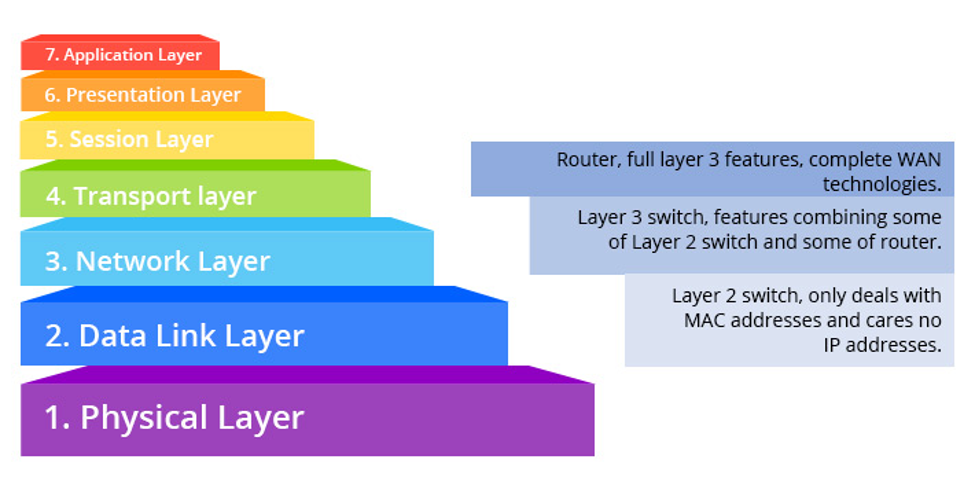Enterprises usually work on different tools, each having more importance than the other. One of those tools is 3-layer connectivity network. For anyone who does not know, their layers refer to the different parts of an IT network communication and it explains how you arrange that network. To start with, we have to explain what OSI is, or as many other people know as Open System Interconnection.
There are 7 layers that make up OSI. It is a networking model where information is passed down through each of these seven layers.

The difference between Layer 2 and layer 3.
Layer 2 is the layer where different information is encoding and later decoding into bits. Layer 2 forwards data to all devices when transmitted through only one which can later create problems such as network efficiency decrease if the network gets too large. The different functions of Layer 2 are said to be:
- Physical addressing
- Getting the information ready
- Issue solving
Whereas Layer 3 provides logical paths (virtual circuits) from node to node where information is transmitted. Layer 3, which is a special networking device has many different functions such as:
- Handling errors
- Can act as a switch
- Has the functionality of a router
- Routing and forwarding data
- Internetworking
3-layer network is different than 2-layer network, although they are counted as very similar not only in their appearance but also their function mode. 3-layer networks, since made for intranets, provide better network routing performance for local networks.
Layer 2 has lower costs given that it needs no routing gear and only requires switching. However, it also has many different disadvantages such as it includes no router hardware.
As we mentioned above, layer 2 can face some problems if the network gets too large creating congestions. On the other hand, layer 3 restricts such traffics and only broadcasts to local networks.
What are some of the benefits that a 3-layer switch provides?
- Decreases latency
- Simplifies problem solving (troubleshooting)
- Decreases broadcast traffic volumes
- Faster internet
- Provides high performance device
- High speed scalability
However, layer 3 also has some disadvantages such as its cost, application limitation since it is only applicable for large intranet environments and not for small businesses or houses. Liked reading about 3-Layer Connectivity? To learn more about layer 2 and layer 3, AiNET has got you covered!
